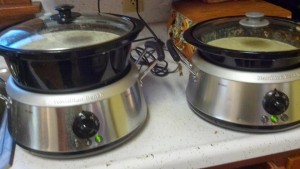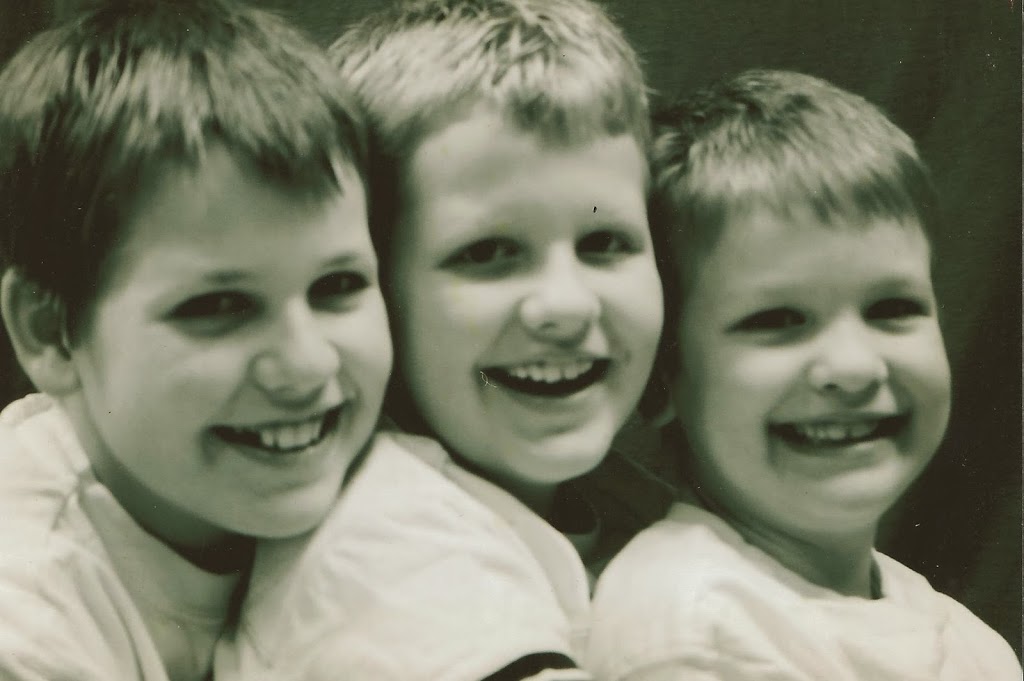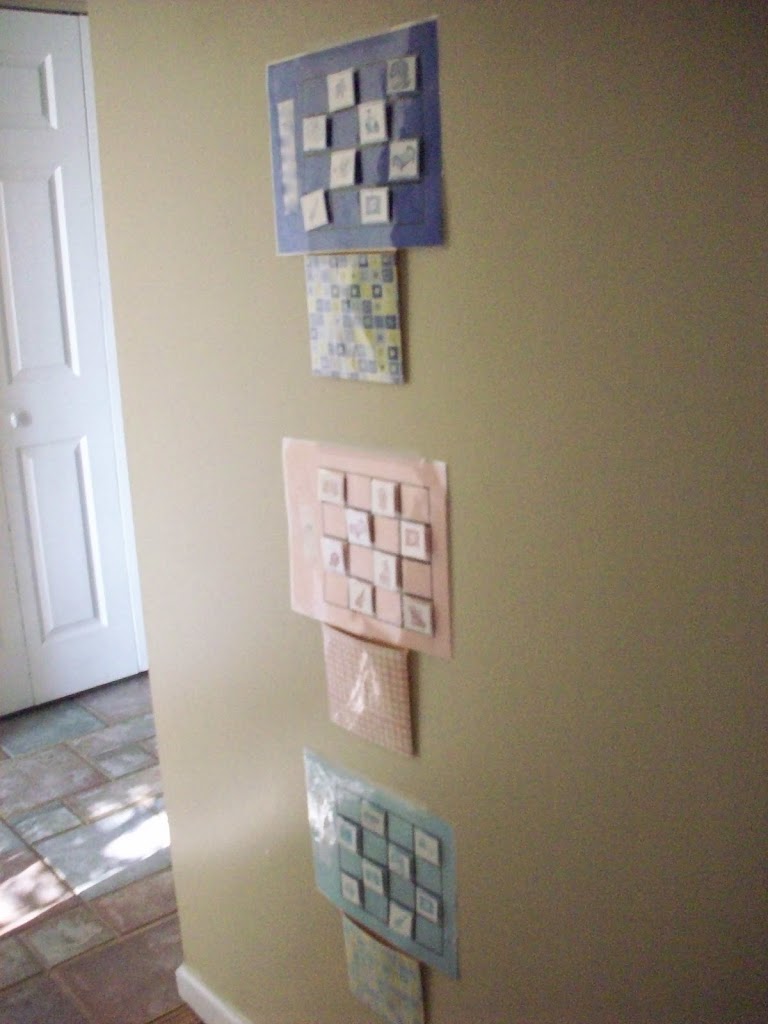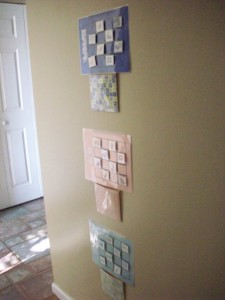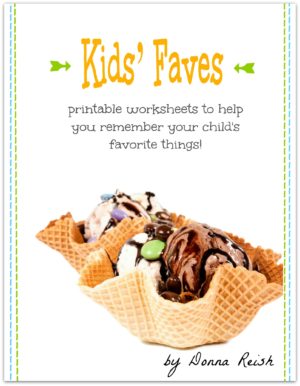by Donna | Jan 5, 2014
My grad-student daughter from Illinois, my fifteen year old son, and I spent half a day this week cooking with my daughter who is expecting her first baby (our first grandchild) in four weeks. I have done freezer cooking for twenty-two years, so the girls just naturally do these types of cooking and food preps as well.
In three hours, five of us did fifty meals! That is twice as many as I normally would do in that time with that many people working simply because I was splitting the meals between Cami and me–so we averaged four servings per meal (instead of the normal eight servings that my meals now make). She took the smaller ones (see picture above) while I took the bigger ones. So in essence, we did twenty-five entrees that fed three and twenty-five entrees that fed six to eight.
The details of how to freezer cook are definitely for another time (and I am looking into doing a podcast about it for those who have been asking a lot), but I did want to document the fact that I cooked rice in the oven for the first time, and it turned out wonderful!
One of the entrees we were making is called “meatball stroganoff over rice.” We had long-grain brown rice, but my daughter forgot to bring her rice cooker, and mine is well, buried or lost or something. (I’ve been decluttering and getting rid of things and putting things I don’t use as often in tubs, and, well, I lost the rice cooker.)
Normally, when I do freezer cooking (usually once a week I do four to ten entrees for the freezer during one of my twice-weekly (or thrice-weekly) Kitchen Sessions), I start things immediately that take a while. One of those early tasks would be to put a lot of rice in the rice cooker for this stroganoff dish. I couldn’t put it in the microwave because that would tie up the micro too long, and I didn’t want to cook it on the stove because it would also be tied up–plus, I hate watching rice on the stove top while I am freezer cooking. It is a pain and just another thing to think about when I am crazy busy in the kitchen.
I remember a friend telling me that another mutual friend cooks her rice in the oven, so I Googled it and discovered that it looked as simple as the rice cooker or micro method (both of which I love and yield perfect rice imho).
I will put the link below from about.com for detailed instructions, but I skimmed the recipe and did what I always do: did four times as much as the recipe said while not really doing what the instructions say–and hoped for the best!
In a nutshell, I put four cups of rice and eight cups of hot water in a jelly roll pan (huge “cookie sheet” type of pan with great sides–mine take up my entire oven, like the size of two 9×13’s or so). I did this twice. Turned the oven on 375, covered the two pans tightly with foil, and forgot about the them for forty-five minutes or so. Then I pulled them out, removed the foil, and had perfect rice. It didn’t take up my micro or stove top; I didn’t have to stir or watch or add more water, etc. It was that simple.
Note that the instructions say that you need to boil the water first, add butter, etc., but I literally did what I wrote above. Easy peasy. If I were doing it again, I would use broth. I always cook my rice in broth, but for some reason I forgot this time.
Anyway, we pulled the rice pans out of the oven and dipped the rice into the bottom of our foil pans, placed our meatballs all over the rice, then coated the meatballs with our stroganoff gravy. And they looked delicious!
Here is the official instructions from about.com:
https://culinaryarts.about.com/od/ricegrains/a/Rice-In-The-Oven.htm

by Donna | Nov 14, 2013
I found a great way today to make two soups quickly–one that is an easy family favorite and one that works for my husband’s low carb eating lifestyle.
The first one, Cheeseburger Potato Soup, is one of the easiest soups I make. I am all about Sandra Lee’s Semi Homemade books and recipes, and this one could easily qualify as one of hers! Unfortunately, I don’t have a “real” recipe–so bear with me while I try to get it down in writing! 😉
Here is how I made it.
1 to 2 lbs of ground beef (we like a lot of meat in ours)
1 (32 oz) bag of frozen hash browns (cubed)
1 quart of half and half or cream
2 to 3 quarts of milk or half and half
1 1/2 lbs of shredded Velveeta
1/2 lb of shredded cheddar
Optional: 3 stalks of celery and one large onion and olive oil or butter
Seasonings to taste: salt, pepper, basil, garlic herb seasoning, worcestershire powder,parsley
1. Optional: Cook chopped onion and celery in skillet until tender.
2. Cook ground beef and drain. (When I am making something the next day with ground beef, I put ten pounds of it in my huge crock pot, turn it on low overnight, and let it cook. The next morning I drain it and use part of it for my recipe and either freeze the rest of it or make something else.)
3. Put everything in the crock pot and cover and cook on high for three hours or low for five to six hours.
4. At the end of the cook time, whisk 1/4 cup of cornstarch in 1/2 cup very cold water and whisk that mixture into the hot soup. Cook uncovered for another hour or so on low or half an hour on high until thickened.
Serves 10.
Cheeseburger Carrot Soup
Same ingredients except for the following:
1 lb of ground beef (we like a lot of meat in ours)1 lb of carrots, steamed and cut into small cubes
1 quart of cream
1 quart of half and half
3/4 lb of shredded Velveeta
3/4 lb of shredded cheddar
Optional: 3 stalks of celery and one large onion and olive oil or butter
Seasonings to taste: salt, pepper, basil, garlic herb seasoning, worcestershire powder,parsley
1. Optional: Cook chopped onion and celery in skillet until tender.
2. Cook ground beef and drain. (When I am making something the next day with ground beef, I put ten pounds of it in my huge crock pot, turn it on low overnight, and let it cook. The next morning I drain it and use part of it for my recipe and either freeze the rest of it or make something else.)
3. Put everything in the crock pot and cover and cook on high for two hours or low for four to five hours.
4. At the end of the cook time, whisk in 1 bar (8 oz) of full fat cream cheese. Cook uncovered for another half an hour on high until thickened.
Serves 6.

by Donna | Oct 11, 2013
 |
| When “littles” have routines and consistency, every day can be a joy! |
Yesterday I introduced the concept of the morning routine for all children. Today I would like to spend time on helping parents develop morning routines for their preschoolers. Tomorrow I will address older children and teens in this area.
I mentioned that a mom at a parenting seminar taught us about morning routines when we only had first graders and under. As she explained developing this routine, she showed her littles’ morning routine chart—a darling “board game” that she made on half sized poster board with every other square of the “Candyland” type of board containing a picture of something that the child needed to do in the morning—a child dressed; a child making his bed; a child putting his pj’s away; etc. It was so sweet—and we came home and promptly made “morning routine board game charts” for all of our kids who were old enough to follow the board and do a morning routine. (We used little people/animals with that tacky stuff placed on the bottom of them for the child to take around the board as he does his morning routine. These boards hung on the refrigerator, so it was important that the little pieces were lightweight and stuck well when the child put them on a square.)
Here are some additional tips for implementing morning routines with your little ones:
1. Timing each activity before setting the morning routine time is more important with this age group than any other. Small children can get discouraged if things seem to take too long—and a timer and reporting back to you while developing the time for the morning routine will help him see that this morning routine is truly doable.
2. Consider making a game board like the one described above, with pictures of children on them for your non-readers. (We wrote the task at the bottom of each picture, so the child had the picture as well as the words.)
3. You know your little ones better than anybody. Only put in the morning routine what your child can truly go do fairly independently. Start out small with just a few tasks and then increase as his responsibility and diligence increase.
4. If an entire morning routine chart would overwhelm your young kids, consider an 8 ½ x 11 inch piece of tag board divided into four equal quadrants. In the upper two, put GROOM and ROOM; in the bottom two, put DRESS and MESS. Start with the upper left hand square and work towards getting that part done without complaining and dilly dallying. This GROOM one might include washing face and hands, brushing teeth, combing hair (or coming to Mom with brush and ponytail rings to have her fix your hair). Once that is well underway, add the ROOM one—and have him straighten his room and make his bed in the morning. Continue in this way until all four quadrants are part of his morning schedule. (You can laminate this and have him X each quadrant with a white board marker as he finishes it each day.)
5. Be consistent. If you say that morning routines will be done before breakfast—and before the television is turned on, then follow through. As soon as you start varying from the plan (letting him watch a cartoon when his morning routine isn’t finished, etc.), the morning routines will go by the way. He needs to see that you are serious about helping him learn diligence, responsibility, time management, obedience, and more by being consistent with his morning routine.
6. As mentioned yesterday, consider something fun, like a first-thing-in-the-morning story to get your little ones moving—then do the morning routines.
7. Only put things on the morning routine chart for this age that truly must be done in the morning. You do not want to fill the morning with so much activity that it cannot all be accomplished. Anything that can be done ahead of time, such as packing backpacks, laying out clothes, making sandwiches for lunch, etc. are better off done the night before rather than trying to cram too much into the morning.
8. Develop consistent morning routines for yourself. We can’t sit down with coffee and the morning show in our robe while expecting our children to be doing their morning routines. Modeling goes a long way in teaching thoroughness, time management, and much more.
9. Rewards and encouragement go a long way for this group!
I think back nostalgically to the days of five littles nine and under—all learning how to work, become organized, and more via morning routines. They were so proud of their morning routine game boards and would often take visitors to the fridge to show them and tell them what their early mornings consist of. Two of our little ones even did recitations at a “homeschooling expo” in which they showed their charts and told the audience what they did each morning when they got up. Wowsie…that makes me smile…with a few tears of longing mixed in.
Note: We used Choreganizer chore cards to develop our preschoolers’ morning routine charts (available at https://www.rainbowresource.com/proddtl.php?id=018244). Clip art programs would also work well for obtaining pictures to use on charts.

by Donna | Oct 11, 2013
“The most important thing that parents can teach their children is how to get along without them.” Anonymous
 |
| Image Blessed Femininity |
One of the most valuable “Proactive Parenting” tips that we have followed is that of the “morning routine” development. Twenty years ago we attended a parenting seminar in which a young mom was discussing how we could make our mornings run more smoothly, teach our children to be more independent, etc. through this thing that she called morning routines. She even had darling picture-filled charts that she made to help her non-readers follow their morning routines. We began morning routines immediately upon arriving home—and we still use them over twenty years later.
I tell moms in our workshops that “morning routines will change the way your entire day goes.” This has been true for us as a homeschooling family, but I definitely think that parents whose children need to get up, around, and off first thing in the morning would really benefit from developing these routines. If you find your mornings extra stressful—and you drop your kids off at school in less-than-happy moods as a result of the hurried, nagging-filled morning or you homeschoolers start your school day off with kids still in pajamas or carrying Lucky Charms into the school room when it’s time to begin—then morning routines are for you.
Below I will give you some tips for starting this outstanding daily habit—and in days to come, I will address various age groups and the morning routine more extensively.
1. Decide how extensive you want your child’s morning routine to be. For older kids (especially girls), we have found that it can be a full ninety minute block that includes their personal morning habits, as well as chores, devotions, and exercise. For younger children, especially boys, we have had morning routines that were simple—and called “room, groom, dress, mess”—signifying that it includes straightening their bedroom, person grooming, getting dressed, and cleaning up any messes they have from the night before (i.e. water glasses, books upstairs, making bed, etc.).
2. If your mornings are chaos now, I recommend starting with a simple list of five to eight tasks that have to be done upon rising—the most basic things that must be done. For example, getting changed, grooming, putting away pj’s, making bed, packing bag for day, etc. This can be added to later once these daily habits are established.
3. Consider what you truly have enough time for in the mornings. We are flexible with our mornings in that Mom and all of the kids stay home and do school, so we have a morning routine time, a chore time, and a personal devotion time—all before breakfast. (When our girls were home, they usually had an exercise time, as well.) If you need to get your kids out of the house early in the morning, you will not want to try to do so many things in the morning as your kids’ rising time would likely be unbearable to get all of those things in before a seven a.m. school bus trip.
4. If your children are always sleepy in the mornings—and hard to motivate, consider starting your morning ten minutes earlier, and waking them up to a story or a chapter out of a chapter book. When our boys were younger, I would sit on their bed in the morning and read to them to wake them up—then they got up and started their morning routines. This seemed to give them some time to get used to getting up and moving.
5. Be realistic in how much time everything takes. When we first set up our preschoolers’ morning routines, we used a timer and had them go do each task, then report back to us. We told them how long that activity took—and wrote down that time plus ten or twenty percent (since they will likely move more slowly in the mornings). Then we added up the total list and came up with an allotment of time for morning routines. This way both of us knew that they truly could get that little list done in that amount of time.
6. Set up consequences or rewards, depending on your parenting style. If you are having really harried mornings now, I recommend that you start out with rewards and then move to consequences. For example, you might have a jar for each child and every morning that the morning routine is completed without reminding, complaining, etc.—and on time—you put a quarter or fifty cent piece in the jar for a treat at the end of the week. After a couple of months, you could remove the reward incentive, but tell them that morning routines are still part of your day—and that if they do not do them according to the guidelines, they will lose a privilege.
The goal of morning routines is that everybody is doing what they need to do in order to start their day—without fighting, coaxing, cajoling, stress, and yelling. It is, in essence, a step toward teaching our “children to get along without us.”
*Watch this blog for future posts on morning routines at different ages and stages, chore charts, and more.

by Donna | Oct 8, 2013
“When a child is allowed to do absolutely as he pleases, it will not be long until nothing pleases him” (Anonymous).
 |
| If you don’t want your kids to get muddy, don’t let them play in the mud! But if you’re like us, and think there are many more important things in life than if kids get muddy, go ahead and let them play! The key is to be proactive–decide ahead of time what you can and cannot tolerate! |
One of our favorite Preventive Parenting tips is that of becoming a problem solver. As parents, we can complain that we do not like how something is going or how our children are behaving–or we can decide to solve the problem at hand.
We have found that many things that seem insurmountable–getting kids up and around on time in the mornings without too much stress, having the evening meal on the table at a certain time, and being sure that our kids are reading a lot–are easily taken care of when we decide to solve the problem–rather than just complaining about it or wishing that things were not as they are.
Let me give you some real life scenarios that I have recommended or heard of lately to get your “thinking skills” and “problem solving strategies” working:
1. Kids up running around in the morning, getting into things, etc., before Mom has had a chance to get herself ready–and prepare for their rising!
Make a “nobody up until you are told you can get up” rule. Our preschoolers were not allowed to get up whenever the pleased.
Just like they had to go to bed at a certain time, they also were not permitted to get up at random times. We had tape players in their bedrooms with radio dramas and talking books available–and also had them put their favorite books on their headboards. They were allowed to read or listen to tapes in the mornings, but they had to wait for me to get them up before they got out of bed.
2. Kids outgrowing their naps but fighting with each other when Mom and other littles are trying to rest.
We can come out and referee fights, yell at our kids for waking the baby, etc,. or we can make a quiet hour–a time in which only quiet activities are allowed. For us, these quiet activities were in a tub marked Quiet Hour–and were items that did not need any assistance to use.
In the case of fighting after outgrowing naps, the two who are fighting must have Quiet Hour in separate rooms–and if Quiet Hour is violated, it’s back to naps for them.
3. Kids not ready in the morning on time, stress and fighting, etc.
Implement morning routines–a set list of things that each child does from rising times until breakfast, or whatever the end of morning routine time holds. Figure up the amount of time needed to get those things done, subtract that from leaving or ready for school time–and make that time the Morning Routine time. (Read more about morning routines here.)
The point of this post is that so many things that cause us stress, fights, poor relationships, nagging, etc. can be handled through problem solving–proactive parenting–parenting in a way that we prevent those times, as opposed to always putting out fires because we did not prevent them to begin with.
Proactive Parenting provides a much more peaceful environment in our homes. It allows us to work on the discipline issues that are really crucial–and to ward off punishment, etc., for situations that can be handled ahead of time, rather than in the heat of the moment.
As an added bonus, Proactive Parenting teaches our kids how to solve problems, come up with options, get a handle on things before they become too big, etc., as they watch us model these skills for them.
by Donna | Oct 4, 2013
Once you learn to “Delight in Dailies” and get the things done that need to be done on a daily basis, it is time to get other things done, but what?
I can remember when my husband and I were first married, I would ask him, “How do you know what to do every day when you go to work?” I just couldn’t figure out how he knew what needed to be done.
He would always ask me, “How do you know what to do when a student comes for tutoring?” or “How do you know what to do around the house and with the kids every day when you get up?”
I remember telling him, “I just do.” And he would say it was the same for him at work.
Prioritizing at work and at home are two very different things though. I mean, at work, you have a boss waiting for you to finish something. And you have deadlines, etc.
But at home, once you get the dailies done, everything else that isn’t a daily is always screaming out to you! (Come to think of it, before you get the DAILIES done, everything is screaming out to you!)
I have followed two very simple tips in working on non-dailies:
1. I always do the next thing that is due. I call these my TIMELY TASKS.
(Well, almost….like just now I was printing recipes for my cooking morning tomorrow and I got sidetracked writing this post. Technically, the recipes are due before this because my cooking day starts at 8:30–and this could wait until tomorrow–but I digress!)
Once I am done with my dailies, I always ask myself what is the next thing that has to be done–my editor is waiting on a document; student papers have to be edited for class the next day; tomorrow’s meat has to be marinated; bedding has to be moved to the dryer in order to go to bed tonight, etc.
This one little tip always keeps me moving in the right direction!
2. I have an ABC WEEKLIES list.
Yes, for many years, I hardly saw this WEEKLIES list, but now I get to some of the things–and I am having so much fun!
After I get my dailies done–and I have “put out fires” by doing the next thing that is due–then I am ready to consult my WEEKLIES list. (I finally get to organize a closet or clean out the snack cupboard!!!)
But I don’t just have a WEEKLIES list; I manipulate my WEEKLIES list. I go down the list task-by-task and write an A, B, or C beside each one.
Then when I have a chance to do something off of it, I do an A task. And I keep on doing A tasks all week–anytime I get a chance (after my dailies and timely tasks).
No matter what else happens in any given week, I know that I have my DAILIES done; I have my timely tasks out of the way; and I did as many A’s as I could (and occasionally even a B or two!).
This isn’t a glamorous approach. I don’t craft beautiful things. I don’t decorate my home Better Homes and Garden style. I don’t always cook from scratch. I don’t scrub between the washer and dryer.
But I feel like an organizational genius. And my home runs fairly smoothly. And I spend time with my kids and husband. And we eat decent meals. And we always have clean clothes and the trash out of the house….because these things are my DAILIES.
When I was homeschooling a houseful of children, the new readers read, the writers wrote, and I checked their work, read aloud to them, talked to them, and taught them the Bible…because these things were my DAILIES.
Because I always did my DAILIES…..I became an organized homeschooler!
Everything is always crying out to be done. People want us to do everything. Our extended families need us. Our church needs us. Our ministries need us. Our jobs need us. Our children need us. And we can start to feel like the hamster on the wheel very quickly if we don’t have a plan in place to get to the important things.
My DAILIES, TIMELY TASKS, and ABC WEEKLIES have helped me do that for many, many years!
(Now back to my recipes!)




